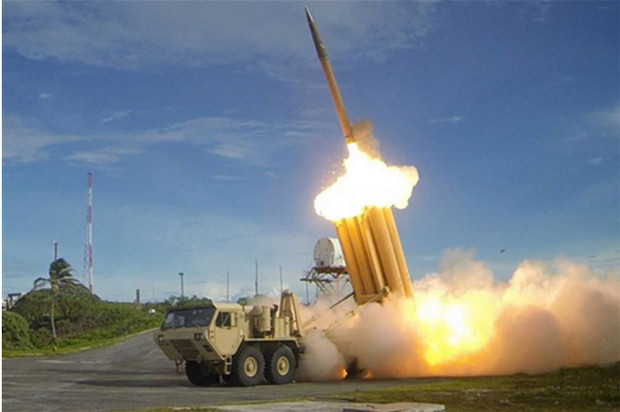
North Korea is threatening ‘physical action’ once the US and South Korea deploy the Terminal High-Altitude Area Defense (THAAD) anti-missile system (picture). US DEPARTMENT OF DEFENSE / LOCKHEED MARTIN PHOTO
SEOUL, South Korea — North Korea on Monday threatened to take “physical action” to counter a sophisticated US anti-missile system planned to be deployed in the South.
The warning follows an announcement by Seoul and Washington Friday to deploy the Terminal High Altitude Area Defense (THAAD) system in South Korea to counter growing threats from the North.
READ: North Korea makes apparent progress with midrange missile | US to deploy missiles in S.Korea as North riled
The two allies have not yet revealed exactly when and where in the South the system would be deployed but said they were in the final stage of selecting a potential venue.
“The DPRK will take a physical counter-action to thoroughly control THAAD… from the moment its location and place have been confirmed in South Korea,” the artillery bureau of the North’s military said in a statement, according to the official Korean Central News Agency (KCNA).
North Korea’s military, which has “sufficient latest offensive strike means”, will take “more merciless and powerful successive corresponding measures against the US keen to ignite a war by deploying THAAD”, it said.
It also warned the South of “miserable self-destruction” as a consequence of deployment of the THAAD system.
“We once again warn the enemies that it is the steadfast will of the KPA to make merciless retaliatory strikes to reduce south Korea to a sea in flames, debris once an order is issued,” the statement said.
A day after Seoul and Washington’s announcement, North Korea test-fired what appeared to be a submarine-launched ballistic missile, sparking swift international condemnation.
The launch followed Pyongyang’s back-to-back tests of a powerful new medium-range Musudan missiles on June 22 — theoretically capable of reaching US bases as far away as Guam.
Tensions have soared since Pyongyang carried out its fourth nuclear test in January, followed by a series of missile launches that analysts said show the North is making progress toward being able to strike the US mainland.
North Korea also claimed that Seoul was “offering” the South as a “US nuclear outpost”.
Since the announcement on the THAAD system, residents from possible deployment sites have launched mass protests against bringing the missile defence system to their towns.
On Saturday, some 3,500 residents of Chilgok county, North Gyeongsang Province, protested against the possible deployment, saying the region had not been properly developed since US troops were stationed there in 1960.
Around 5,000 residents from Eumseong county, North Chungcheong Province, will also launch a mass demonstration Monday to protest at the lack of information provided to the public about the dangers of the defence battery.
The plan to deploy the powerful THAAD system in South Korea has also angered Beijing and Moscow, which both see it as a US bid to flex military muscle in the region.